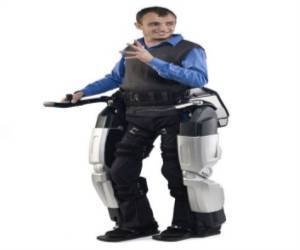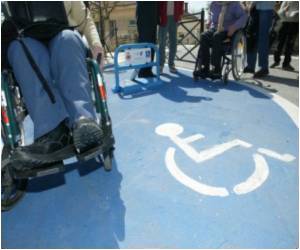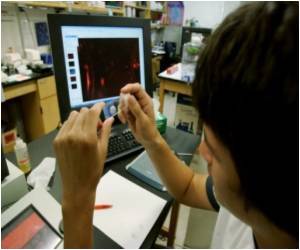
"This is a breakthrough," said Susan Harkema, a professor at the Spinal Cord Research Center at the University of Louisville, Kentucky, who led the 11-member team.
"It opens up a huge opportunity to improve the daily functioning of these individuals...but we have a long road ahead."
The work, published online by The Lancet, was carried out on a young volunteer, now aged 25, who had been completely paralysed below the chest after a tragic hit-and-run accident in 2006.
Today, after 26 months of retraining of the leg muscles, followed by the pioneering surgery, the patient can reach a standing position and support his own weight for up to four minutes at a time.
Helped by a harness support and some assistance from a therapist, he can make repeated stepping motions on a treadmill. He can also voluntarily move his toes, ankles, knees and hips on command.
Advertisement
"This procedure has completely changed my life," he said. "For someone who for four years was unable to even move a toe, to have the freedom and ability to stand on my own is the most amazing feeling.
Advertisement
Paralysis comes from damage to the spinal cord down which the brain sends electrical signals along nerve fibres to instruct limb movement.
The research focuses on nerve networks in the lower spine that are relatively autonomous -- they can follow through the commands for weight-bearing and coordinated stepping without input from the brain.
The mechanism works thanks to feedback from nerves in the muscles of the legs and feet that is sent directly to the spinal cord.
It is this sensory input that helps the individual to adjust his balance and speed of movement and level of weight-bearing in response to surfaces and inclines.
"The spinal cord can independently interpret these data and send movement instructions back to the legs -- all without cortical [cerebral] involvement," explained Reggie Edgerton, a professor of integrative biology and comparative physiology at the University of California, Los Angeles.
The technique entailed giving Summers 26 months of locomotor training to get his leg muscles used again to the sensation of movement, thus reviving the feedback system.
Surgeons then implanted 16 electrodes in the lumbosacral spinal cord, connecting them to thick nerve bundles that largely control movement of the ankles, hips, knees and toes.
The unit then sent down electrical signals to mimic those sent down the spine by the brain in order to initiate movement.
With Summers, electrostimulation was part of sessions lasting up to 250 minutes.
The success has fired hopes that at least some individuals with spinal paralysis can use a portable stimulation unit to trigger the movements needed to stand up and bear weight.
With the help of a walker, it is hoped, such patients would maintain balance and execute some effective stepping.
There could be even greater secondary benefits, including perhaps the restoration of bladder and sphincter control and sexual response.
But only one person has so far had the treatment, out of five authorised by the US Food and Drug Administration (FDA).
Summers, while completely paralysed below the chest, was rated a "B" on the US classification of spinal injury, as he did retain some feeling below the spot where the damage occurred.
So it is unknown whether the procedure will work on "A" patients, who have no sensation below the injury. In addition, Summers is young and was extremely fit before his accident.
Drugs are being developed to heighten the sensitivity and function of the spinal cord neural network, which could further enhance the technique.
Source-AFP











